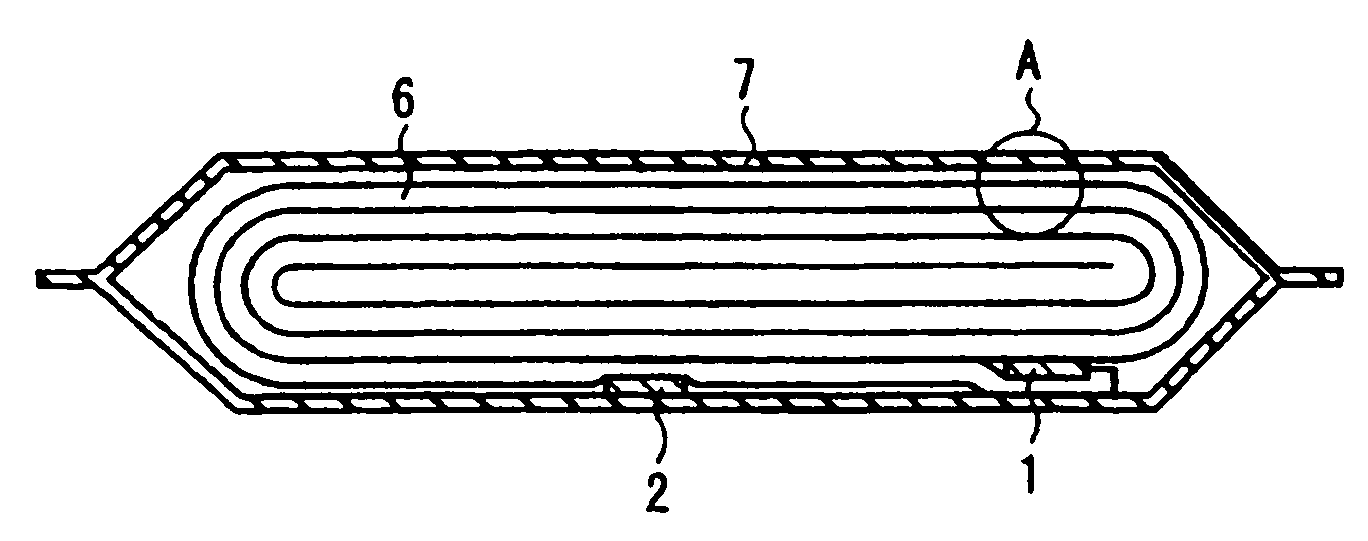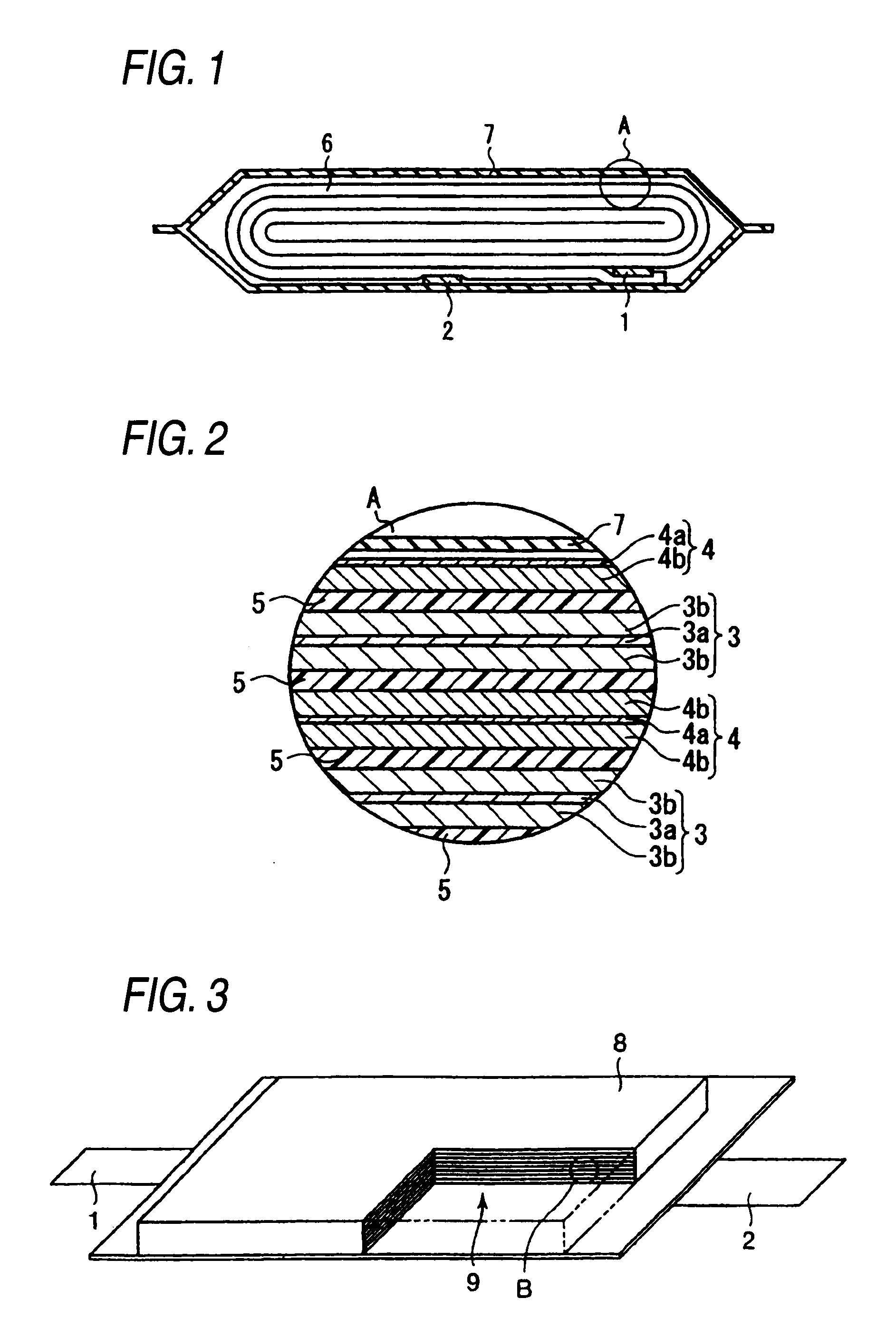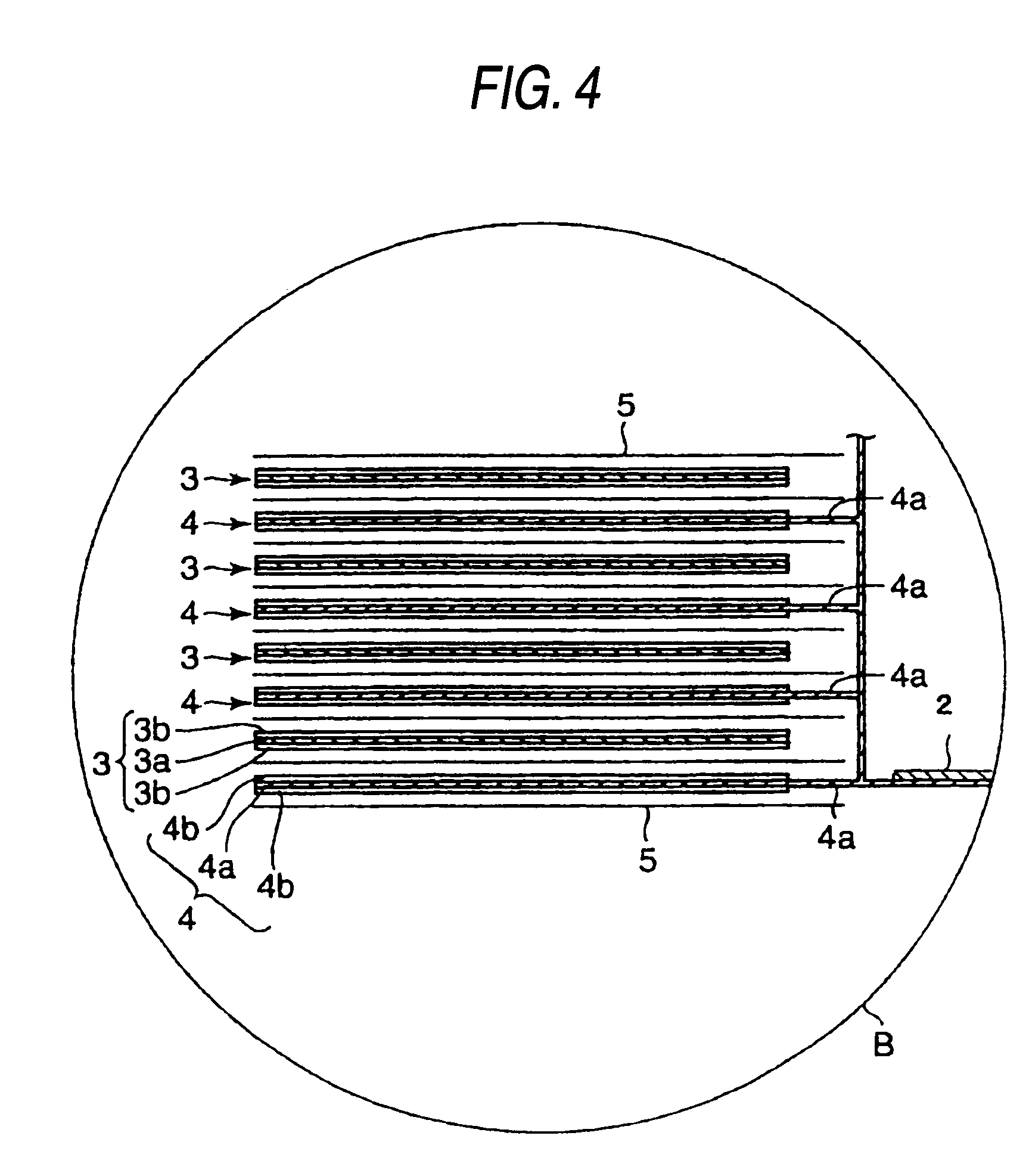Nonaqueous-electrolyte battery
a technology of electrolyte battery and non-aqueous electrolyte, which is applied in the direction of organic electrolytes, cell components, secondary cell details, etc., can solve the problems of battery characteristics deterioration, and achieve satisfactory battery characteristics and enhanced safety
- Summary
- Abstract
- Description
- Claims
- Application Information
AI Technical Summary
Benefits of technology
Problems solved by technology
Method used
Image
Examples
example 1
Production of Positive Electrode
[0126]To N-methylpyrrolidone (NMP) were added 90% by weight lithium-manganese oxide (LiMn2O4) powder as a positive active material, 3% by weight acetylene black and 3% by weight graphite as conductive materials, and 4% by weight poly(vinylidene fluoride) (PVdF). The ingredients were mixed together to obtain a slurry. This slurry was applied to each side of a current collector which was an aluminum foil having a thickness of 15 μm. The slurry applied was dried, and the coated foil was pressed to thereby produce a positive electrode having an electrode density of 3.0 g / cm3.
[0127]
[0128]A spinel lithium titanate (Li4Ti5O12) powder having an average particle diameter of 0.84 μm, BET specific surface area of 10.8 m2 / g, and lithium insertion potential of 1.55 V (vs. Li / Li+) was prepared as a negative active material. The particle diameter of this negative active material was determined with a laser diffraction type distribution analyzer (SALD-300, manufac
examples 5 and 13
[0137]Nonaqueous-electrolyte secondary batteries were produced in the same manners as in Examples 4 and 10, except that 1,4-diisocyanatobutane was added in place of the 1,6-diisocyanatohexane in preparing the nonaqueous electrolytes.
examples 14 to 18
[0138]Nonaqueous-electrolyte secondary batteries were produced in the same manner as in Example 10, except that 1-isocyanatoethane, 2-isocyanatopropane, 1-isocyanatohexane, 1-isocyanatobutane, or 3-isocyanato-1-propene was added in place of the 1,6-diisocyanatohexane in preparing the nonaqueous electrolyte.
PUM
 Login to view more
Login to view more Abstract
Description
Claims
Application Information
 Login to view more
Login to view more - R&D Engineer
- R&D Manager
- IP Professional
- Industry Leading Data Capabilities
- Powerful AI technology
- Patent DNA Extraction
Browse by: Latest US Patents, China's latest patents, Technical Efficacy Thesaurus, Application Domain, Technology Topic.
© 2024 PatSnap. All rights reserved.Legal|Privacy policy|Modern Slavery Act Transparency Statement|Sitemap



